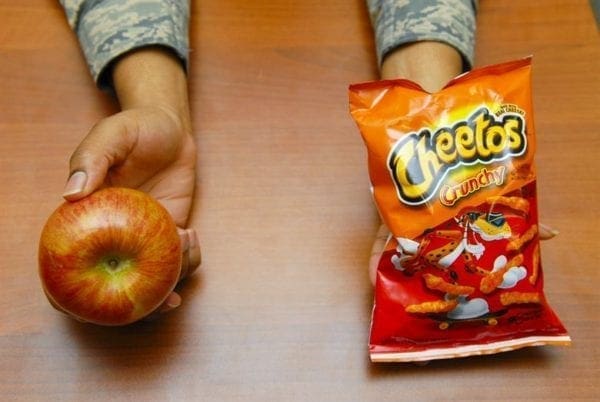There are few things all people can agree upon nowadays, but one universal truth is that medications cost too much – but why?
As we have found ways to make electronics, furniture, clothing, etc. cheaper, medications have continued to skyrocket, even with competition in the market with introduction of generics. Since 2000, the cost of medications in the United States has climbed from $120 billion to $360.3 billion in 2019. We spend nearly 17% of our gross domestic product on healthcare, almost 5 percent more than any other country – yet we rank below average in almost all health outcomes categories.
The Institute of Medicine has estimated that 30 percent of our healthcare costs are “unnecessary, ineffective, overpriced, and wasteful services.” What that equates to is $765 BILLION, a figure which is more than what our country spends for our K-12 education. Our government continues to spend more in healthcare programming, which contributes more to our national debt and prevents spending in other areas, like infrastructure. Think of every pothole you hit as wasteful healthcare costs, and I’m sure you’ll agree before long that healthcare reform should be a high priority in our upcoming state and federal elections.
Despite paying more for insurance premiums year after year, our out-of-pocket expenses continue to increase. Since 2014, individual premiums have inflated 62 percent while family premiums have soared 75 percent, but patients continue to pay more out-of-pocket expenses at hospitals, doctors’ appointments, and pharmacies. One in four have difficulty affording their medications regularly, which usually results in making some difficult choices: go without food or go without medication.
Hippocrates is quoted to say, “Let food be thy medicine and medicine by thy food,” or as we have recently abbreviated it “food is medicine.” In a situation where choosing between food and medicine, the patient and our health outcomes always lose. This situation, which I call medication starvation, leads to more health conditions as a result of improper nutrition, which further perpetuates the cycle. People who are hungry are almost THREE TIMES more likely to develop a chronic condition.
Let’s put a little finer point on this healthcare issue and talk about children’s health. Hunger is linked to academic performance; those who experience hunger in kindergarten tend to fall behind and stay behind. Children who are hungry are FOUR times more likely to need professional counseling and can affect them for 1o to 15 years later. Even more alarming, hungry children are FIVE TIMES more likely to commit suicide. Mental health continues to be a huge area of opportunity for American healthcare – what if the answer is in our grocery stores?
Although childhood hunger is heartbreaking, they are not alone. Senior citizens are the fastest growing population battling hunger, while at the same time, college students are increasingly facing hunger issues. One in four veterans of the Iraq and Afghanistan wars is food insecure, a term defined as the state of being without reliable access to a sufficient quantity of affordable, nutritious food.

Here’s some staggering figures from The Alliance to End Hunger:
- Estimates put healthcare costs related to hunger, nationwide, at $130.5 billion each year;
- Hospitalizations account for $16.1 billion of that $130.5 billion annual cost;
- Depression accounts for $29.2 billion of those costs; and another $19.7 billion is related to suicide;
- Poor health, in general, costs $38.9 billion annually, with Upper GI disorders costing $5.7 billion, and colds, migraines and iron deficiency account for $3.5 billion;
- For every $1 spent on food, and feeding an individual who is food insecure or experiencing hunger, approximately $50 is saved in Medicaid expenses;
- It is less expensive to feed an individual healthy food for a year, than to cover the costs of hospitalization and related medical expenses for one day;
- 30% of households with seniors reported having to choose between food and medical care.
Healthcare reform has been discussed and tweaked as political platforms and talking points since President Truman, yet we continue to waste more, spend more, and get less for our money. Sure, life expectancy is longer, but are we actually living better? The point of living longer is to be able to do more with our time – not to suffer longer.
With hunger statistics declining since 2011 and closing in on the 2007 pre-recession national average of 11.1%, many states are still lagging, including West Virginia and Kentucky at almost 16percent and 15 percent, respectively. In fact, comparing the top 10 unhealthiest states against the top 10 healthiest states regarding food insecurity statistics, it’s easy to see the underappreciated effect on food as an indicator of health. On average, there’s about a 5percent difference in hunger rates from the top 10 (9.54%) to the bottom 10 (14.22%).
My home state of West Virginia serves as a wild, wonderful example of how our healthcare spending fails to show return on investment. We have one of the most insured populations in the country AND the highest rate of public health spending per person, yet we rank highest in drug overdoses, smoking, and obesity. Only three other states have slightly higher food insecurity statistics.

As a pharmacist, I cannot stress the importance of adherence to medications; however, I know for many medication adherence is a financial hardship. We are spiraling out of control as a healthcare nation by putting our patients in a situation that forces the decision between food and medicine. If food is medicine, and patients can’t afford food, isn’t that irresponsible, inappropriate healthcare?
In 2020, I urge every healthcare professional to ask some internal questions: what can I do to be an affordable care advocate for my patients? Are my patients getting comprehensive care which includes hunger and mental health evaluation? Isn’t it time for healthcare reform to fix our nation’s people AND economy?
Make it a priority when electing your policymakers in November. Instead of looking at individual platforms or issues, let’s see if we can solve them together: mental health, hunger, healthcare, and economy.
These are not separate issues.




